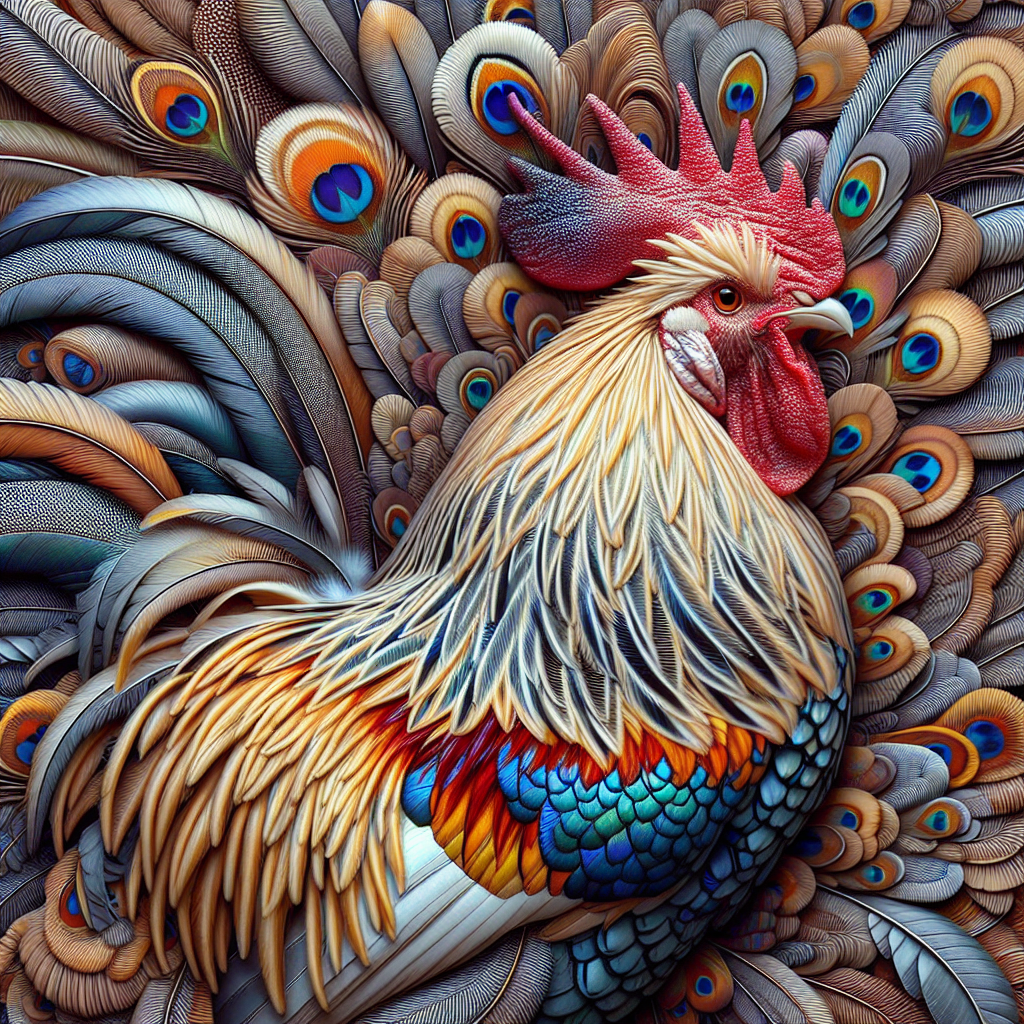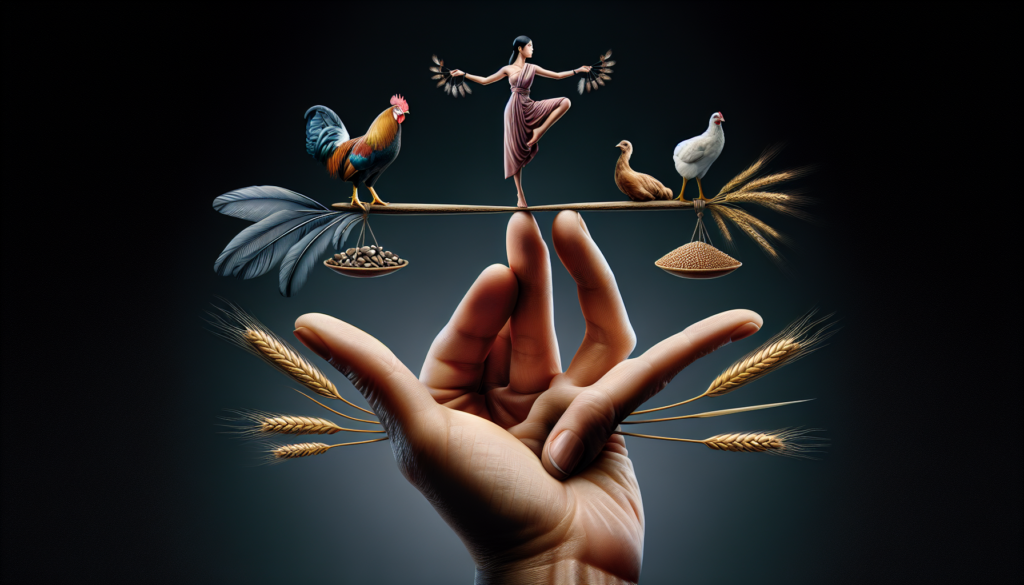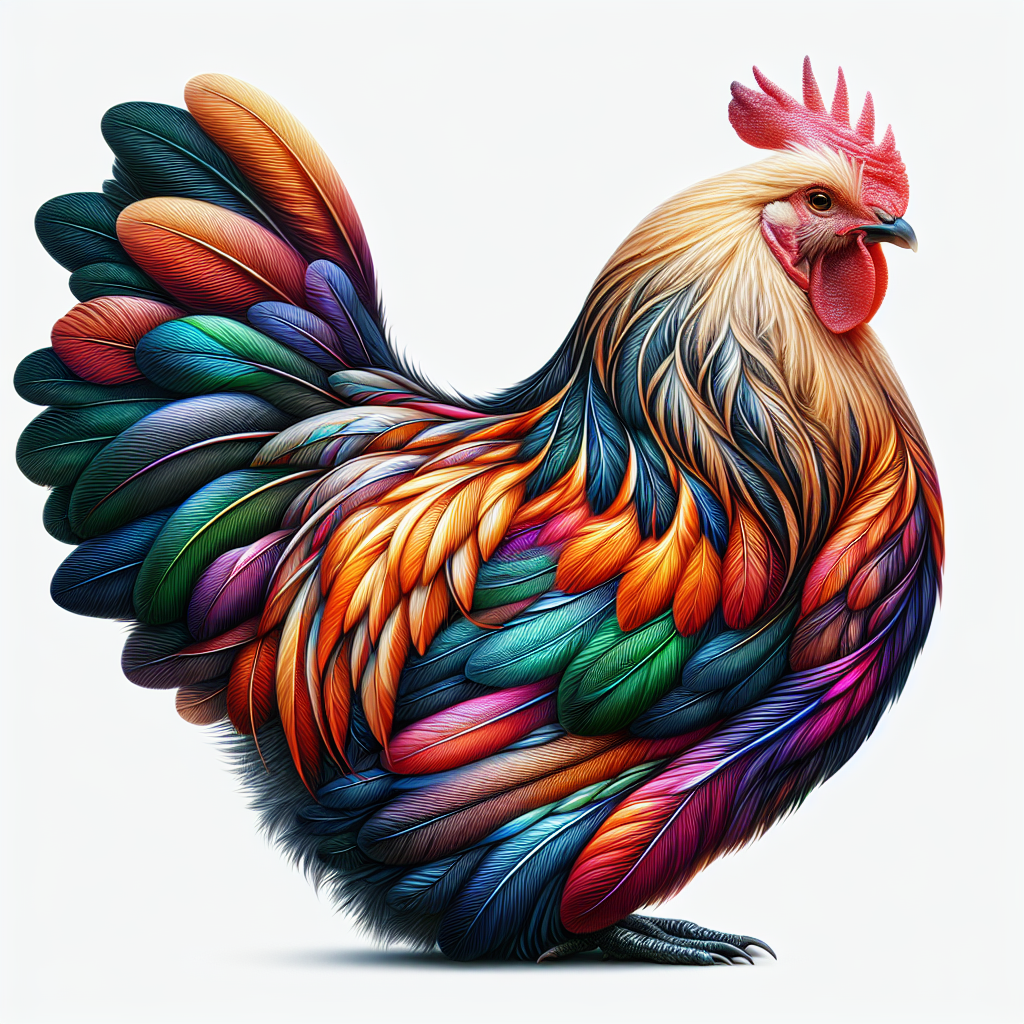Have you ever wondered how hybrid roosters stand out in terms of behavior and characteristics compared to other roosters? Curious to explore the fascinating world of these unique feathered creatures? Well, get ready to be captivated by the intriguing differences that set hybrid roosters apart. From their distinctive behaviors to their striking physical traits, these hybrids have much to offer in terms of their individuality and charm. Get ready to uncover the secrets behind the allure of hybrid roosters and discover why they are truly a breed of their own.
Physical Characteristics
Size
Hybrid roosters are generally larger in size compared to other roosters. Due to their hybridization, they inherit traits from both parent breeds, resulting in a bigger and more robust physique. The increased size can make hybrid roosters particularly impressive and commanding in appearance.
Coloration
Hybrid roosters exhibit a wide range of coloration, which is determined by the combination of their parent breeds. Depending on the specific hybrid variety, they can display an array of vibrant feathers ranging from solid colors to a mixture of hues. This diverse coloration adds a touch of unique beauty to the overall visual appeal of hybrid roosters.
Feather Patterns
Hybrid roosters often showcase striking feather patterns that are distinctive to their breed. These patterns can vary greatly, from intricate stripes to intricate speckles, and everything in between. These distinctive feather patterns make hybrid roosters stand out and make them even more visually captivating.
Comb Shape
The comb, or the fleshy crest on top of a rooster’s head, can come in various shapes for hybrid roosters. This characteristic can be inherited from either parent breed and can range from a single comb to a rose comb, V-shaped comb, or even a cushion comb. The particular shape of the comb contributes to the overall appearance and charm of the hybrid rooster.
Wattle Size
The wattles, the fleshy lobes hanging down from a rooster’s chin, may also vary in size and shape for hybrid roosters. Sometimes large and pendulous, other times small and compact, the wattles can have a significant variation based on the hybrid breeding. The size of the wattles can influence the overall facial appearance and aesthetics of the hybrid rooster.
Behavioral Differences
Dominance
Hybrid roosters often exhibit a higher degree of dominance compared to other roosters. This dominant behavior stems from their genetic makeup, as they inherit strong traits from both parent breeds. As a result, hybrid roosters may assert their authority more firmly within the flock and display a more dominant presence overall.
Temperament
Hybrid roosters commonly possess a friendly and docile temperament, which can be attributed to the influence of one or both of their parent breeds. These gentle characteristics make hybrid roosters more approachable and easier to handle, especially for poultry enthusiasts and farmers who seek cooperative and well-behaved roosters.
Aggression
While hybrid roosters generally have a reputation for being less aggressive than some purebred roosters, it is important to note that individual temperament may still vary. The level of aggression in a hybrid rooster’s behavior can be influenced by its genetic composition and the genetic traits inherited from its parent breeds. However, overall, hybrid roosters are known to have a more moderate and manageable level of aggression.
Foraging
Hybrid roosters possess a natural instinct for foraging and are generally more efficient at finding food compared to other roosters. This characteristic can be particularly beneficial in free-range or backyard farming settings, as hybrid roosters can help maintain a healthy and sustainable flock by utilizing their skills in finding resources.
Roosting
Hybrid roosters tend to exhibit a strong sense of leadership when it comes to roosting behavior. They have a natural ability to guide their flock to safe roosting spots and maintain order during the settling process. This leadership role can help ensure the well-being and safety of the flock, instilling a sense of security and cohesion among the hens.
Vocalization
Crowing Patterns
Hybrid roosters display unique crowing patterns that can vary depending on their parent breeds. Some hybrid roosters may have a more melodic and varied crow, while others may have a deeper and more resonating sound. These distinct crowing patterns can add a captivating charm to the hybrid rooster’s vocalizations.
Volume
Hybrid roosters often have a moderate to loud volume when it comes to their crowing. This volume can vary based on individual roosters and their specific genetic makeup. It is worth noting that the crowing noise produced by hybrid roosters can still be adjusted or trained to some extent, especially in urban or noise-sensitive areas.
Tone
The tone of a hybrid rooster’s crow can also differ based on its parent breeds. Some hybrid roosters may have a clear and melodious tone, while others may have a more robust and assertive tone. These unique tones contribute to the overall auditory experience of owning a hybrid rooster and add character to their vocalizations.
Reproductive Characteristics
Fertility
Hybrid roosters are generally highly fertile, thanks to the combination of genetic traits inherited from their parent breeds. Their reproductive capabilities make them valuable assets for poultry breeding programs and ensure a high rate of successful breeding outcomes.
Mating Preferences
Hybrid roosters often exhibit a diverse range of mating preferences when compared to other roosters. This preference is partly influenced by the genetic traits inherited from their parent breeds. Their varied mating preferences contribute to genetic diversity within the flock, promoting healthy breeding practices and the production of strong and adaptable offspring.
Broodiness
Hybrid roosters tend to have a lower inclination towards broodiness compared to other roosters. Broodiness refers to the desire of hens to sit on and incubate eggs. This characteristic can be advantageous for poultry farming, as it allows the hens to focus more on egg production while reducing the risk of decreased productivity caused by broodiness.
Hybrid Vigor
Increased Growth Rate
Hybrid roosters often demonstrate an increased growth rate compared to their parent breeds. This phenomenon, known as hybrid vigor or heterosis, results from the combination of genetic traits that promote accelerated growth and development. The increased growth rate can have significant implications for poultry farmers, allowing for faster maturation and profitability.
Enhanced Resistance to Disease
Hybrid roosters are generally more resilient and possess enhanced resistance to disease compared to purebred roosters. The hybridization process introduces a greater gene pool, increasing the chances of inheriting beneficial disease-resistant traits from both parent breeds. This resistance to disease helps ensure the overall health and well-being of the hybrid roosters and their flock.
Improved Adaptability
Hybrid roosters exhibit improved adaptability to varying environmental conditions, thanks to the genetic diversity inherited from their parent breeds. This adaptability allows hybrid roosters to thrive in different climates and tolerate temperature extremes, making them versatile and suitable for a wide range of farming or backyard settings.
Dietary Needs
Nutritional Requirements
Hybrid roosters have specific nutritional requirements that must be met to maintain optimal health and productivity. A balanced diet, consisting of high-quality protein sources, essential vitamins, and minerals, is crucial for their well-being. Poultry feed formulated for hybrid breeds should be provided to ensure they receive the necessary nutrients to support their growth and overall vitality.
Feeding Habits
Hybrid roosters often exhibit efficient and active feeding habits, which can be attributed to their genetic makeup. They possess a natural instinct to forage and find sources of food, ensuring their nutritional needs are met. However, it is important to provide a well-rounded diet and monitor their feeding habits to avoid overfeeding or deficiencies.
Environmental Adaptability
Tolerance to Temperature Extremes
Hybrid roosters are known for their tolerance to temperature extremes, making them adaptable to various climates. Whether in hot or cold environments, hybrid roosters can cope better due to the genetic traits inherited from their parent breeds. This adaptability enhances their ability to maintain optimal health and productivity throughout changing seasons.
Ability to Thrive in Different Climates
Hybrid roosters can thrive in different climates, including both arid and humid regions. Their genetic background equips them with the necessary traits to adapt to varying environmental conditions, enabling them to flourish in diverse climates and geographical locations. This versatility makes them a suitable choice for poultry farming in a wide range of locations worldwide.
Adaptation to Varying Altitudes
Hybrid roosters also demonstrate adaptability to varying altitudes, enabling them to adjust and thrive in high-altitude regions. This characteristic is particularly relevant for poultry farmers operating in mountainous or hilly areas, where the ability of roosters to adapt to the lower oxygen levels and harsher conditions is critical for maintaining a healthy and productive flock.
Hybrid Varieties
Common Hybrid Rooster Breeds
There are various common hybrid rooster breeds, each with its own unique combination of parent breeds. Some well-known hybrid varieties include the Black Sexlink, Red Sexlink, Golden Comet, and Rhode Island Red x White Plymouth Rock cross. These hybrids are popular among poultry farmers for their desirable traits and high productivity.
Unique Characteristics of Each Hybrid
Each hybrid rooster breed possesses its own set of unique characteristics that differentiate them from others. For example, the Black Sexlink is renowned for its efficient egg-laying capabilities, while the Golden Comet exhibits exceptional meat quality. The combination of traits inherited from the parent breeds influences the hybrid’s specific strengths, making them suitable for different farming objectives.
Crossbreeding Challenges
Genetic Compatibility
Crossbreeding to produce hybrid roosters requires careful consideration of genetic compatibility between the parent breeds. Ensuring that the breeds share genetic traits that complement each other is vital for successful hybridization. Genetic compatibility ensures the inheritance of desirable traits and increases the chances of achieving the desired characteristics in the resulting hybrids.
Maintaining Purebred Lines
Maintaining purebred lines can be challenging when focusing on hybrid rooster production. It requires careful breeding strategies to avoid the dilution of purebred genetics while pursuing hybridization. Poultry farmers and breeders must have a clear breeding plan to preserve the parent breeds separately and maintain the integrity of purebred lines.
Hybrid Degeneration
Hybrid degeneration refers to the loss of advantageous traits in subsequent generations of hybrids due to genetic instability. This phenomenon may occur if incorrect or haphazard breeding practices are employed. To avoid hybrid degeneration, responsible breeding practices, proper selection of parent breeds, and maintaining genetic diversity are crucial for preserving the desired characteristics in hybrid roosters.
Hybrid Roosters in Poultry Farming
Advantages of Hybrid Roosters
Hybrid roosters offer several advantages in poultry farming. Their desirable traits, including increased growth rate, disease resistance, and adaptability, contribute to improved productivity and profitability. Additionally, their moderate temperament, efficient foraging habits, and leadership qualities make them valuable assets for maintaining a healthy and well-managed flock.
Economics and Productivity
Hybrid roosters play a significant role in the economics and productivity of poultry farming operations. Their accelerated growth rate and efficient conversion of feed into meat or eggs result in faster production cycles, allowing farmers to meet market demands more efficiently. Furthermore, the increased disease resistance and adaptability reduce potential losses and ensure consistent productivity.
Impact on Meat and Egg Quality
Hybrid roosters have a positive impact on the quality of meat and eggs produced. Their genetic diversity enhances attributes such as meat tenderness, flavor, egg size, shell strength, and yolk color. These improved characteristics provide consumers with a superior culinary experience and contribute to the marketability and reputation of the poultry products.
In conclusion, hybrid roosters exhibit a range of unique characteristics and behaviors that set them apart from other roosters. Their physical appearance, behavioral traits, vocalizations, reproductive characteristics, and traits associated with hybrid vigor make them distinctive and desirable for poultry farmers. Hybrid roosters offer numerous advantages, including increased growth rate, disease resistance, adaptability, and enhanced productivity, ultimately contributing to the success and profitability of poultry farming operations. Through careful breeding practices and proper genetic selection, hybrid roosters continue to play a valuable role in the poultry industry, providing farmers with productive and desirable rooster varieties for their flocks.




